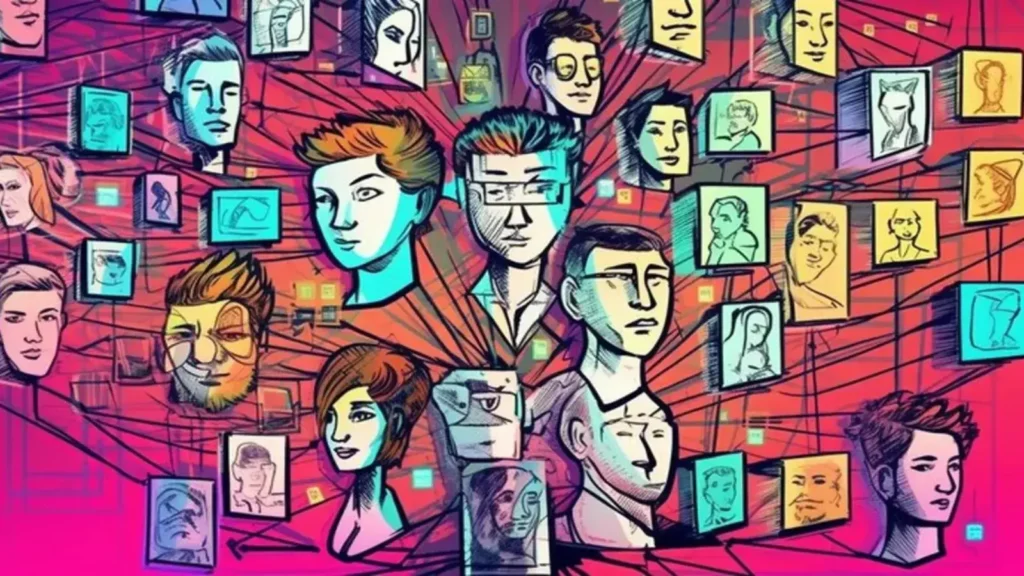In an age where digital expression is boundless, a new artistic movement has emerged—Caricatronchi. A blend of caricature and the Italian term “tronchi” (meaning “trunks” or “limbs”), Caricatronchi plays with distorted human form and identity to challenge our perception of self in the digital world. At once grotesque and playful, this style reflects our online selves: exaggerated, curated, and frequently fragmented.
Origins of Caricatronchi
The roots of Caricatronchi lie in the convergence of caricature art, digital avatars, and meme culture. While caricature has long been used to emphasize and ridicule human features for satire, Caricatronchi shifts the focus from satire to self-expression and identity performance. Emerging largely from online communities, especially in spaces where anonymity and hyperbole are embraced (such as TikTok filters, Instagram avatars, and digital illustration forums), Caricatronchi artists began stretching the boundaries of form—not for humor alone, but to question how we construct identity in digital spaces.
The Visual Language
Caricatronchi art typically involves:
-
Exaggerated body parts – elongated limbs, bloated torsos, minuscule heads
-
Vivid or garish color schemes – unsettling and hyper-synthetic hues
-
Digital textures – often glossy, rubbery, or surreal skin finishes
-
Hybrid forms – human merged with object, animal, or machine
The resulting figures are simultaneously humorous and uncanny, evoking both curiosity and discomfort. Much like avatars in virtual worlds or characters in video games, Caricatronchi creations sit at the intersection of the self and the spectacle.
Exaggerated Identity: A Digital Mirror
At its core, Caricatronchi is about exaggeration as revelation. By warping physical features beyond realism, the artist often highlights internal traits—ego, anxiety, pride, performativity, absurdity. In a digital world where identity is endlessly mutable, Caricatronchi asserts: you are not just what you are, but what you choose to over-emphasize.
This echoes the way people curate their online personas. A carefully chosen filter, a caption soaked in irony, or a grotesque meme are all forms of exaggerated self-representation. Caricatronchi amplifies these choices until they become a statement: Our digital selves are caricatures we control.
Cultural Implications
The rise of Caricatronchi aligns with broader cultural movements:
-
Post-Internet Art: Like many Post-Internet artists, Caricatronchi creators reflect on how the internet shapes identity, aesthetics, and society.
-
Anti-Beauty Aesthetics: The rejection of traditional beauty norms is central to Caricatronchi’s mission. Its grotesque forms are a protest against the airbrushed uniformity of influencer culture.
-
Neurodivergent & Queer Aesthetics: Caricatronchi also resonates with subcultures that challenge normative ideas of body and identity, offering a space where the “non-normative” is proudly hyper-visible.
Notable Artists & Influences
While Caricatronchi is still a loosely defined movement, several digital artists and styles reflect its ethos:
-
GroteskPop illustrators like @uglyworldwide and digital sculptors using tools like ZBrush
-
3D avatar artists working on platforms like VRChat and MetaHuman
-
AI-generated distortions created with GANs that emphasize surreal exaggeration
These creators are not just making art—they are interrogating what it means to have a body and identity in a virtualized age.
The Future of Caricatronchi
As digital identity continues to evolve, Caricatronchi is poised to grow. Its blend of visual absurdity and psychological insight is particularly relevant in a time when people feel both hyper-visible and deeply alienated online.
Expect to see Caricatronchi influence:
-
Fashion and wearable design in AR environments
-
Virtual influencers and avatars with hyper-exaggerated personas
-
Therapeutic and expressive digital art used to explore trauma, identity, and embodiment
Caricatronchi might be strange, but in its distortion lies an uncomfortable truth: in the digital mirror, we’re already exaggerations of ourselves. The art simply reveals it.
Conclusion
Caricatronchi is not just a style—it’s a lens through which we view identity in the digital age. With its twisted forms and surreal exaggerations, it dares to ask: When the self becomes data, how real is the body? In its grotesque poetry, we find an answer: exaggerated identity is not a flaw of the digital world—it is its essence.

